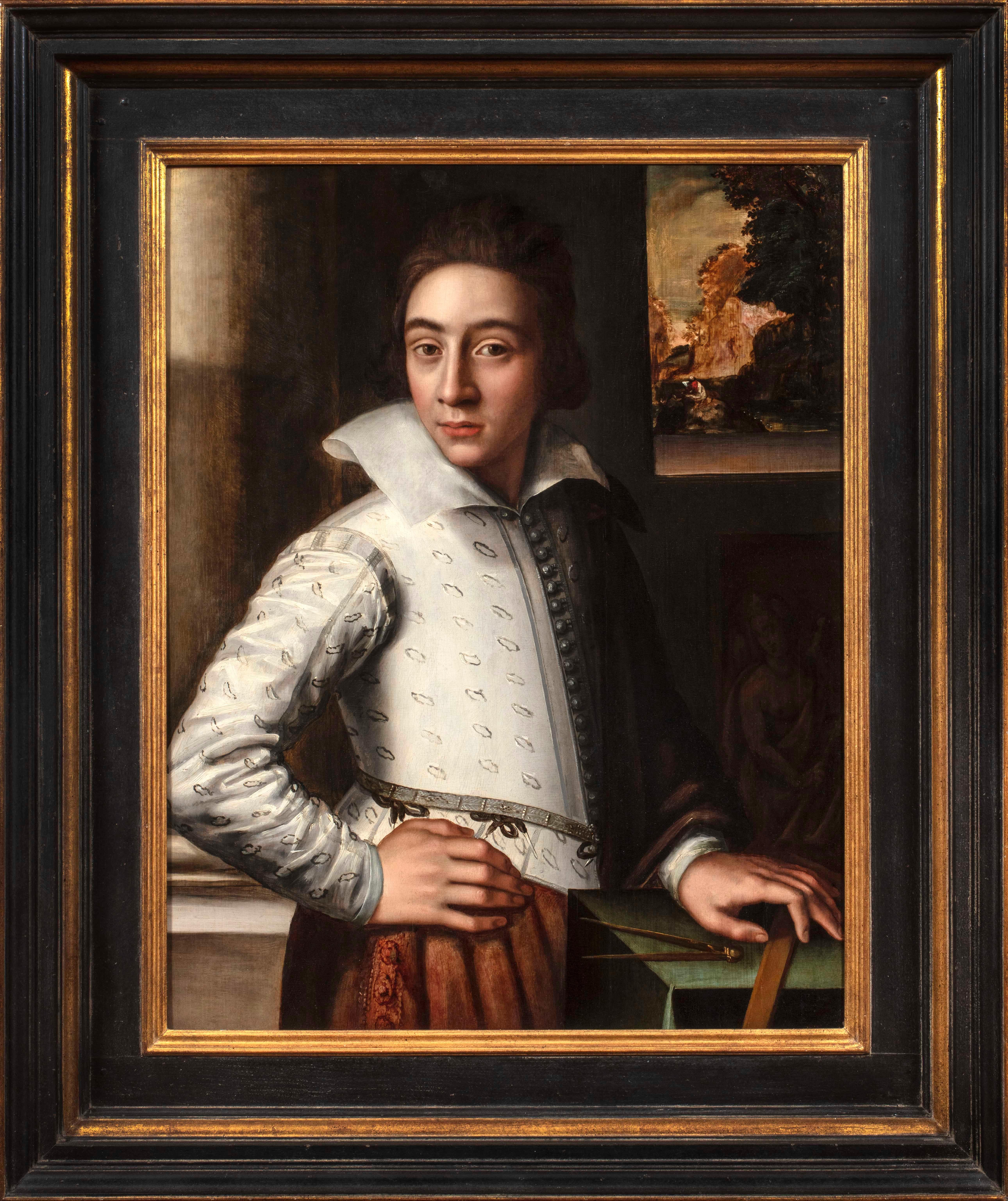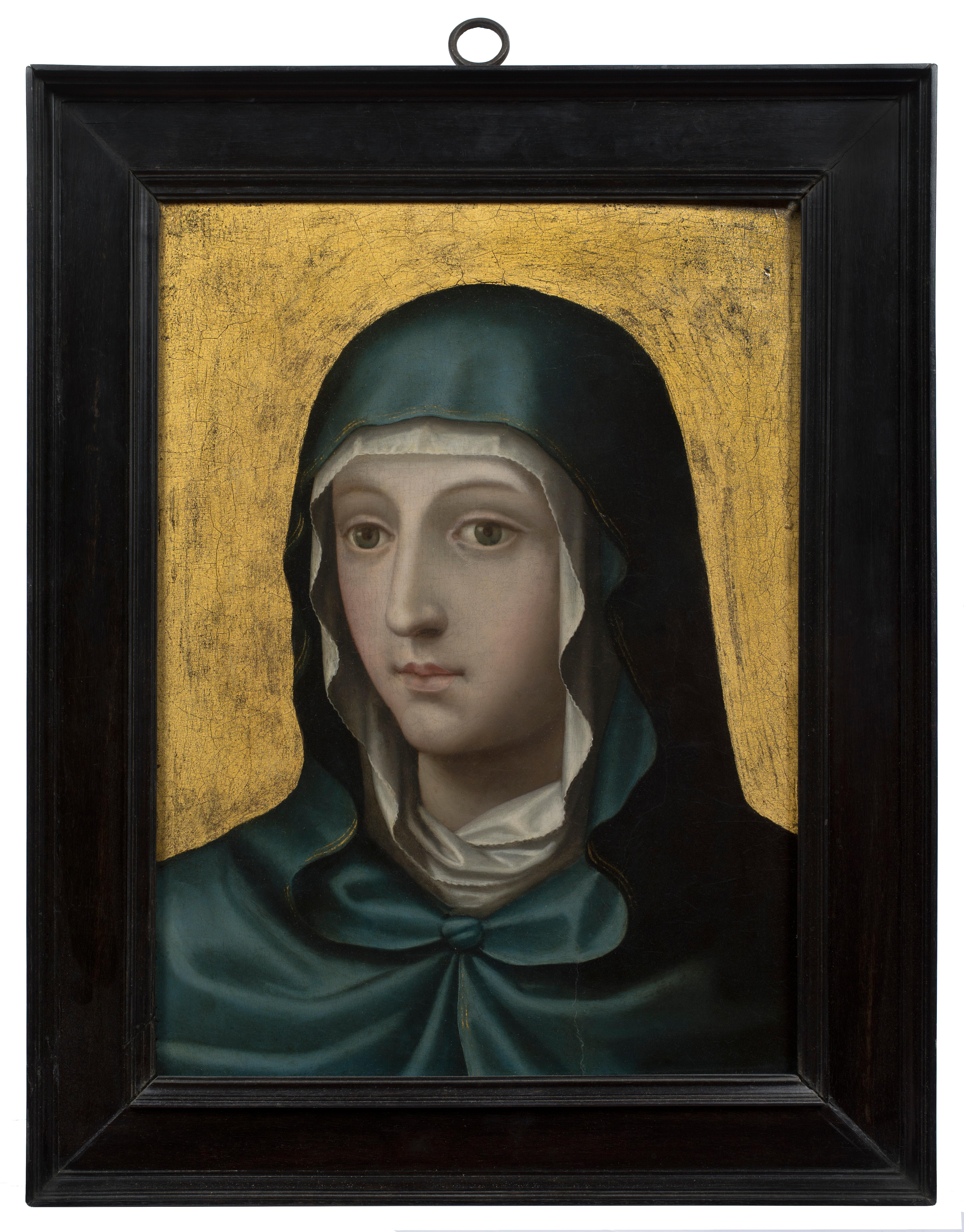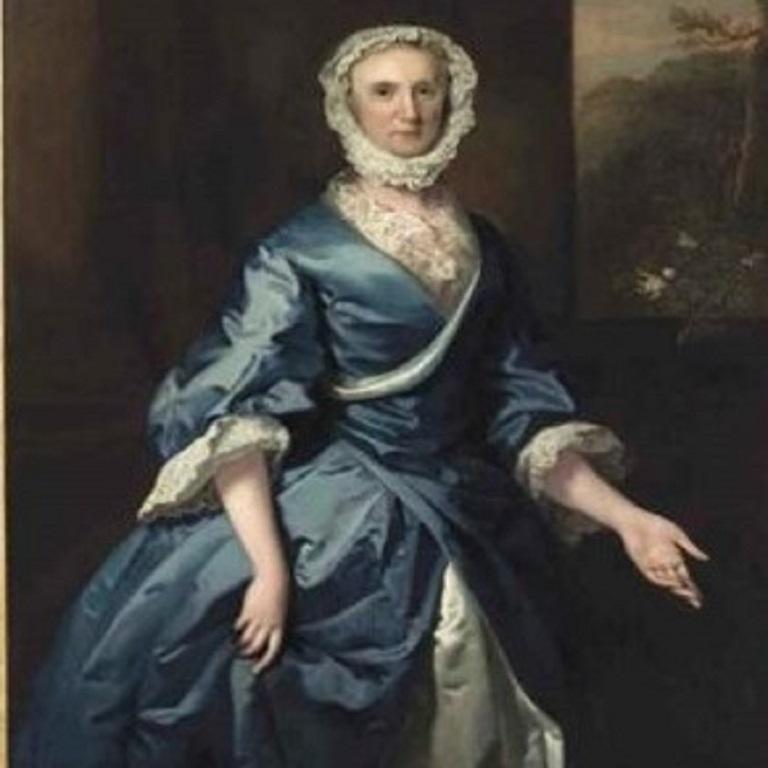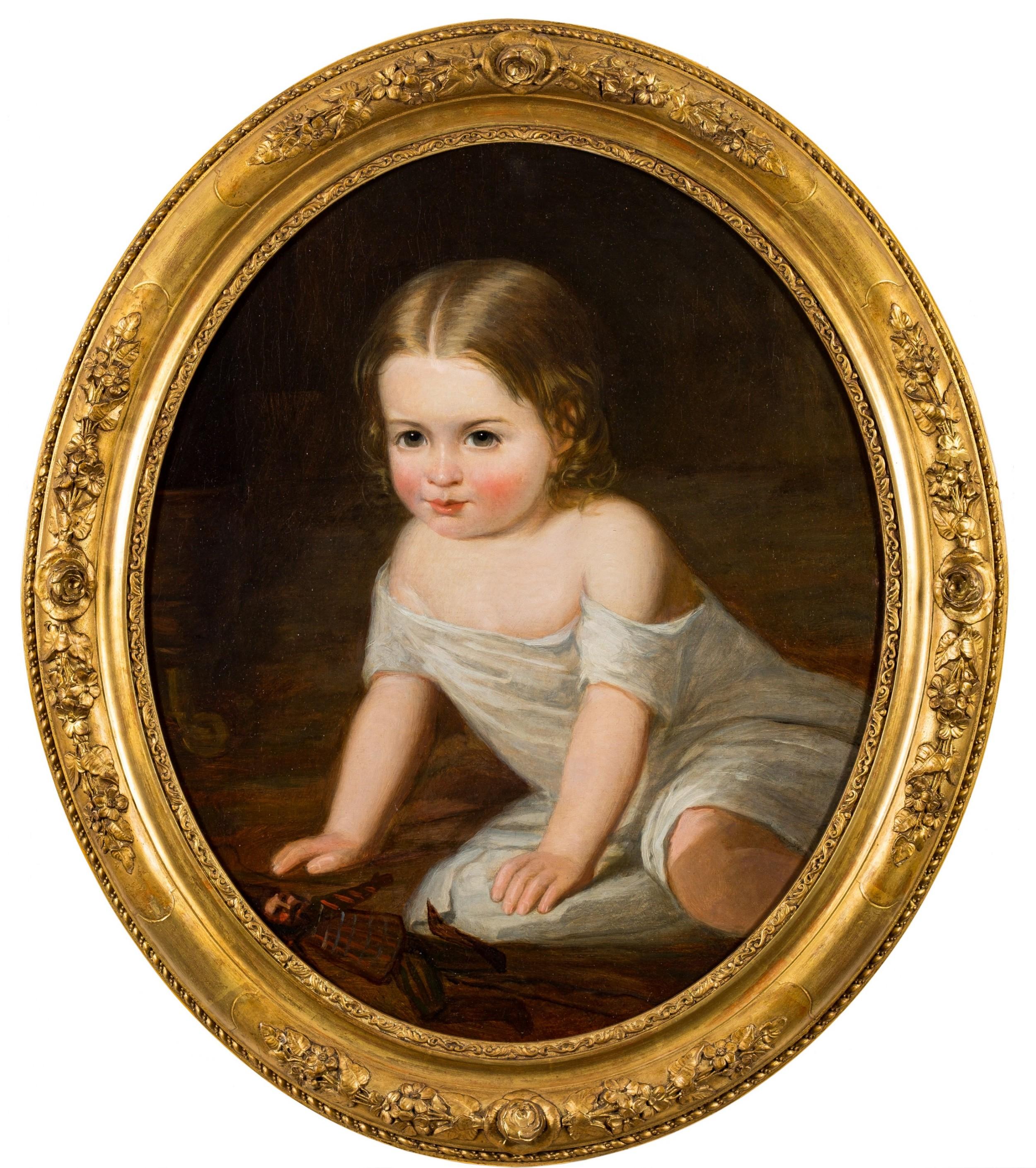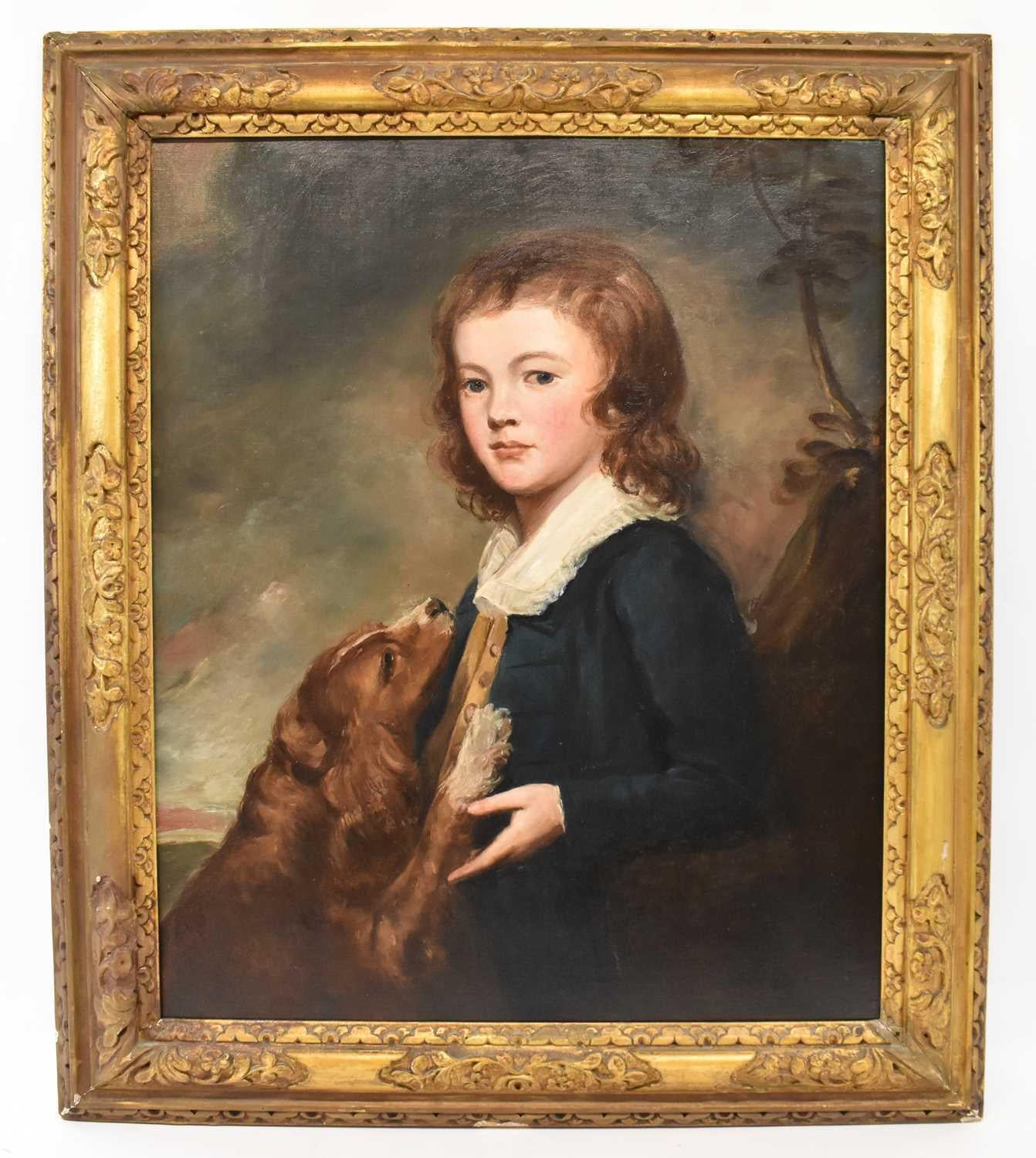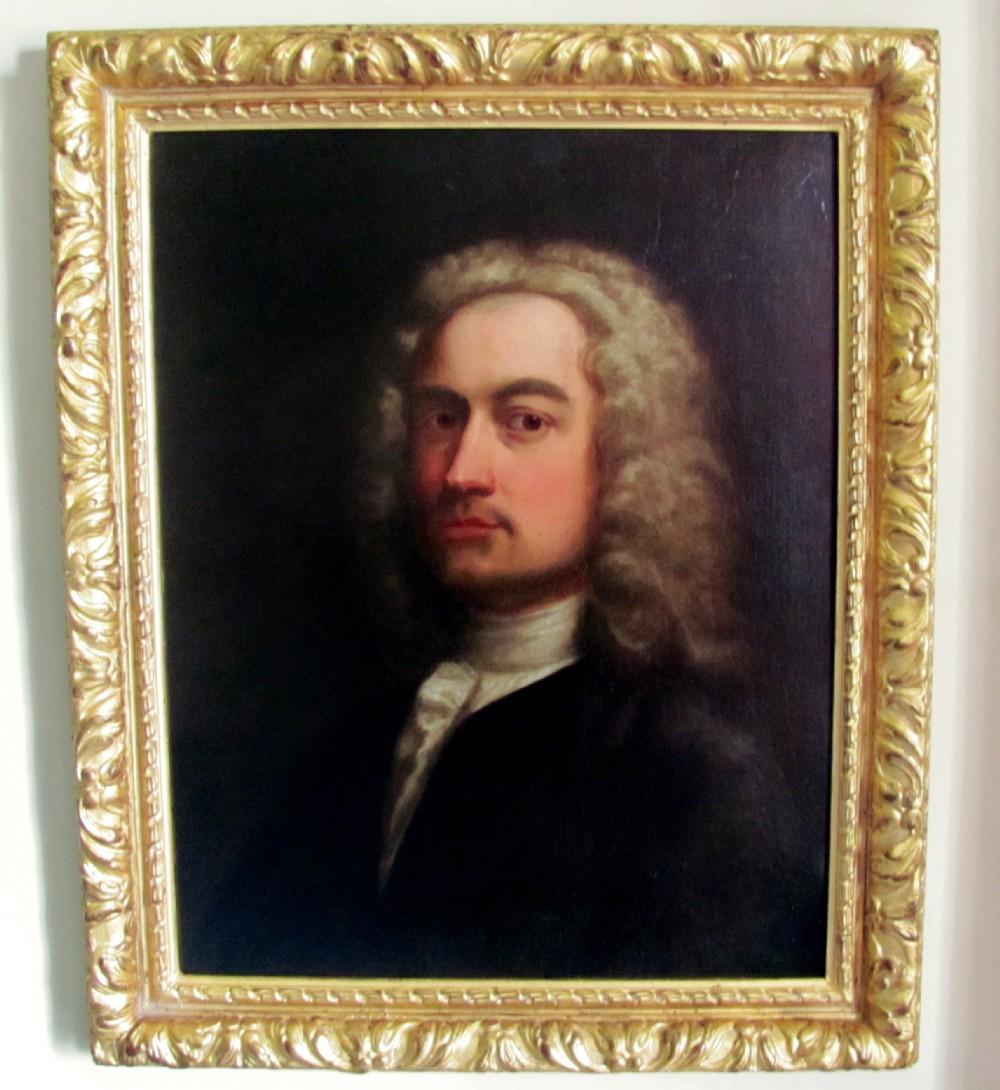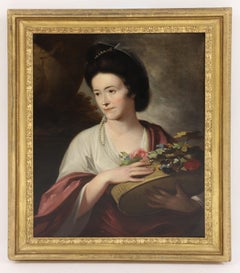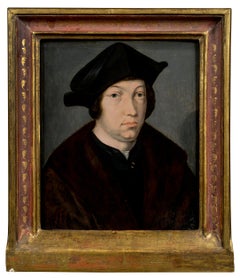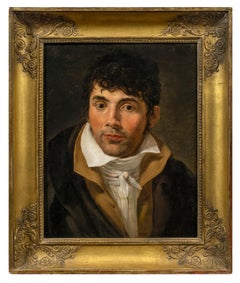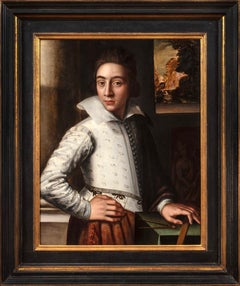Portrait of Meliora Gomeldon
View Similar Items
Want more images or videos?
Request additional images or videos from the seller
1 of 4
John Van Der VaartPortrait of Meliora Gomeldoncirca 1710
circa 1710
About the Item
- Creator:John Van Der Vaart (Dutch)
- Creation Year:circa 1710
- Dimensions:Height: 59 in (149.86 cm)Width: 49 in (124.46 cm)
- Medium:
- Movement & Style:
- Period:
- Condition:
- Gallery Location:Bath, GB
- Reference Number:Seller: 1041stDibs: LU9522013833
About the Seller
5.0
Vetted Seller
These experienced sellers undergo a comprehensive evaluation by our team of in-house experts.
Established in 2002
1stDibs seller since 2015
36 sales on 1stDibs
Typical response time: 1 hour
Associations
The British Antique Dealers' AssociationLAPADA - The Association of Arts & Antiques DealersInternational Confederation of Art and Antique Dealers' Associations
More From This SellerView All
- 18th century English portrait of a lady beside an urn, with a basket of flowersBy Tilly KettleLocated in Bath, SomersetPortrait of a lady wearing a white gown with a red cloak, pearls in her hair and draped over one shoullder, standing beside a classical urn with a basket of flowers, c.1765. The portrait is believed to be a companion portrait of a John (1741-1816) or James (1751-1807) Durno which is housed in an identical frame. The sitter is possibly either the wife of John who was Janes Byres of Stonywood or John and James's sister Elizabeth. (James never married). The Durno family were based around the Aberdeen area of Scotland and John was an advocate in the area and then later a customs official in Jamaica. James was a successful timber merchant, spending time in the Baltic before being made His Majesty's Consul in Memel, Prussia. The portrait is likely to have been painted before Tilly travelled to India in 1768, when John, Jane and Elizabeth would have been in their twenties. We are gtrateful to Mark Beattie for sharing his family knowlege and research on the portrait. Provenance: With W. C. Beattie in the mid 19th century, and by descent through the family Private collection, Kent With thanks to Hugh Belsey who has confirmed this to be the work of Tilly Kettle from photographs. Tilly Kettle (1735-1786) was born in London, the third of six children by Henry Kettle (c.1704-c.1773), a coach painter, and his wife Ann. He attended William Shipley...Category
18th Century Old Masters Portrait Paintings
MaterialsCanvas, Oil
- English 18th century portrait of a Lady and her Daughter in an interiorBy (attributed to) Joseph HighmoreLocated in Bath, SomersetPortrait of a lady, three-quarter length, wearing a blue silk gown, seated in a classical interior, with her daughter in a pink gown standing beside her holding a sprig of blossom. T...Category
Early 18th Century Old Masters Portrait Paintings
MaterialsOil
- Attributed to John Riley, 17th century English portrait of a girl on a terraceBy John RileyLocated in Bath, SomersetPortrait of a young girl, full-length, wearing a blue silk gown, standing on a terrace beside a classical urn holding a branch with blossom. Attributed to John Riley...Category
17th Century Old Masters Portrait Paintings
MaterialsOil, Canvas
$25,616 Sale Price25% Off - English 17th century portrait of James Thynne as a young boy by a fountainBy Johann KerseboomLocated in Bath, SomersetPortrait of the Hon. James Thynne (c. 1680-1704), full-length, in the gardens of Longleat House, seated beside a fountain, holding a shell beneath water spouting from a horn blown by a cherub on a dolphin. A glimpse of part of Longleat House can be seen upper left. Oil on canvas in a period giltwood frame, decorated with leaves and acorns. C. 1682. Dimensions: 145 x 123cm (57 x 48in) in frame Provenance: Ex Longleat House, Wiltshire Private collection, Bath James Thynne was the youngest son of Thomas Thynne, 1st Viscount Weymouth and Frances Finch of Longleat House, Wiltshire. He died in his youth and his Aunt, Anne Kingsmill Finch, Countess of Winchilsea (1661-1720), wrote a moving poem on his death. He was buried in the family vault at Longbridge Deverill, Wiltshire. A mezzotint of this painting by William Faithorne the Younger is held in the Royal Collection. Johann Kerseboom (d.1708) was the nephew of Frederick Kerseboom and first worked in Germany before coming to England in the 1680's where his sitters included the 'Electress Sophia Dorothea' (known from a mezzotint by William Faithorne). His early works were influenced by William Wissing...Category
17th Century Old Masters Portrait Paintings
MaterialsOil, Canvas
$24,592 Sale Price20% Off - 17th century Dutch portrait of a Lady in Red adorned with PearlsBy Pieter NasonLocated in Bath, SomersetPortrait of a lady, half-length in a feigned oval wearing a ruby coloured silk gown holding entwined strings of pearls across her bodice. Signed 'PNason' and dated 1667 (lower right)...Category
17th Century Old Masters Portrait Paintings
MaterialsOil, Canvas
$24,592 Sale Price20% Off - A pair of Dutch 17th century old master portraits of a husband and wifeBy Nicolaes MaesLocated in Bath, SomersetA rare pair of three-quarter length 'marriage' portraits by one of the foremost dutch portrait painters of the 17th century, Nicolaes Maes (Dordrecht 1634-1693 Amsterdam). The gentleman signed middle left 'Maes 1679'. Oil on canvas in dutch style ebonised frames. Dimensions 58 x 47.5cms each. The gentleman is shown in a landscape at dusk, leaning against a stone capital, wearing a white chemise decorated with lace, a black coat and a brown silk cloak draped across his body. The lady is elegantly dressed in an ivory silk gown decorated with jewels on the neckline and shoulders, the contrasting sleeves in gold fabric, with a rose pink silk cloak draped over her shoulder and bodice. She wears a pearl necklace and earrings with her fair hair worn up with ringlets falling down onto her chest in the fashionable style of the day. She stands with one hand touching a lock of her hair as she rests her arm on the bowl of a stone water drinking fountain...Category
17th Century Old Masters Portrait Paintings
MaterialsCanvas, Oil
You May Also Like
- Portrait of a ManLocated in New York, NYProvenance: with Leo Blumenreich and Julius Böhler, Munich, 1924 Dr. Frederic Goldstein Oppenheimer (1881-1963), San Antonio, Texas; by whom given to: Abraham M. Adler, New York, un...Category
16th Century Old Masters Portrait Paintings
MaterialsOil, Panel
$52,500 - Portrait of a GentlemanLocated in New York, NYCircle of Jacques-Louis David (French, 18th Century) Provenance: Private Collection, Buenos Aires Exhibited: “Art of Collecting,” Flint Institute of Art, Flint, Michigan, 23 November 2018 – 6 January 2019. This vibrant portrait of young man was traditionally considered a work by Jacques-Louis David, whose style it recalls, but to whom it cannot be convincingly attributed. Rather, it would appear to be by a painter in his immediate following—an artist likely working in France in the first decade of the nineteenth century. Several names have been proposed as the portrait’s author: François Gérard, Louis Hersent, Anne-Louis Girodet (Fig. 1), Theodore Gericault, and Jean-Baptiste Wicar, among others. Some have thought the artist Italian, and have proposed Andrea Appiani, Gaspare Landi...Category
18th Century Old Masters Paintings
MaterialsCanvas, Oil
$45,000 - Portrait of an Artist (possibly a Self-Portrait)Located in New York, NYProvenance: Bradley Collection. Private Collection, Upperville, Virginia. Literature: Katlijne van der Stighelen and Hans Vlieghe, Rubens: Portraits of Unidentified and Newly Identified Sitters painted in Antwerp, Corpus Rubenianum Ludwig Burchard, vol. 19, pt. 3, London and Turnhout, 2021, under cat. no. 189, p. 161, and fig. 75. This painting had previously been considered to be by an anonymous Tuscan painter of the sixteenth century in the orbit of Agnolo Bronzino. While the painting does in fact demonstrate a striking formal and compositional similarity to Bronzino’s portraits—compare the nearly identical pose of Bronzino’s Portrait of a Young Man in the Metropolitan Museum of Art (Fig. 1)—its style is completely foreign to Italian works of the period. That it is painted on an oak panel is further indication of its non-Italian origin. This portrait can in fact be confidently attributed to the Antwerp artist Huybrecht Beuckelaer. Huybrecht, the brother of Joachim Beuckelaer, has only recently been identified as the author of a distinct body of work formerly grouped under the name of the “Monogrammist HB.” In recent studies by Kreidl, Wolters, and Bruyn his remarkable career has been delineated: from its beginnings with Joachim in the workshop of Pieter Aertsen; to his evident travels to Italy where, it has been suggested, he came into contact with Bronzino’s paintings; to his return to Antwerp, where he seems to have assisted Anthonis Mor in painting costume in portraits; to his independent work in Antwerp (where he entered the Guild of Saint Luke in 1579); and, later to his career in England where, known as “Master Hubberd,” he was patronized by the Earl of Leicester. Our painting was recently published by Dr. Katlijne van der Stighelen and Dr. Hans Vlieghe in a volume of the Corpus Rubenianum, in which they write that the painting “has a very Italian air about it and fits convincingly within [Beuckelaer’s] oeuvre.” Stighelen and Vlieghe compare the painting with Peter Paul Ruben’s early Portrait of a Man, Possibly an Architect or Geographer in the Metropolitan Museum of Art, in which the sitter holds a compass and wears a similarly styled doublet (Fig. 2). Huybrecht both outlived and travelled further afield than his brother Joachim, who made his career primarily in Antwerp. Whereas Joachim was the main artistic inheritor of their uncle and teacher, Pieter Aertson, working in similar style and format as a specialist in large-scale genre and still-life paintings, Huybrecht clearly specialized as a painter of portraits and was greatly influenced by the foreign artists and works he encountered on his travels. His peripatetic life and his distinctly individual hand undoubtedly contributed to the fact his career and artistic output have only recently been rediscovered and reconstructed. His periods abroad seem to have overlapped with the mature phase of his brother Joachim’s career, who enrolled in the Antwerp Guild of Saint Luke much earlier than his brother, establishing himself as an independent painter in 1560. Joachim’s activity was confined to the following decade and half, and his latest work dates from the last year of his life, 1574. Our portrait was likely produced in the late 1560s, a dating supported by the dendrochronological investigation performed by Dr. Peter Klein, which established that it is painted on an oak panel with an earliest felling date of 1558 and with a fabrication date of ca. 1566. This painting presents a portrait of an artist, almost certainly Huybrecht’s self-portrait. The young sitter is confidently posed in a striking patterned white doublet with a wide collar and an abundance of buttons. He stands with his right arm akimbo, his exaggerated hands both a trademark of Huybrecht and his brother Joachim’s art, as well as a possible reference to the “hand of the artist.” The figure peers out of the painting, interacting intimately and directly with the viewer, as we witness him posed in an interior, the tools and results of his craft visible nearby. He holds a square or ruler in his left hand, while a drawing compass...Category
16th Century Old Masters Paintings
MaterialsOil, Panel
- The Veronica of the Virgin (Verónica de la Virgen)Located in New York, NYThe panel has been attributed both to Joan de Joanes and his son Vicente Macip Comes (Valencia, ca. 1555 – 1623). Provenance: Private Collection, England, by 1886 (according to stencils on the reverse) Private Collection, New Jersey, until 2010 The Veil of Veronica, often called the Sudarium, is one of the most important and well-known relics of Christ. According to legend, Veronica offered Christ her veil as he carried the cross to his crucifixion. He wiped his face with the veil, which left the cloth miraculously imprinted with his image. Depictions of Christ’s face on a veil, or simply images that focused in on Christ’s face, were treasured objects of religious devotion. The popularity of this format also inspired similar images of the face of the Virgin. The iconographic type of the present painting is known as the Veronica of the Virgin, which was especially favored in late medieval and early Renaissance Spain. Distinct from the images of the suffering Christ, the Veronica of the Virgin is based on the legend that Saint Luke painted a portrait of Mary from life. Although scholars have sometimes mistaken them for portraits of Queen Isabella I of Castile (known as Isabel la Católica) or as a depiction of Saint Maria Toribia (known as María de la Cabeza, or, Mary of the Head), paintings like this one were clearly intended as images of the Virgin in the style of Saint Luke’s lost portrait. The Veronica of the Virgin was especially popular in Valencia, and depictions of this subject produced there all stem back to one visual prototype: a Byzantine image in the city’s cathedral (Fig. 1). This early treatment of the Veronica was given to the cathedral in 1437 by Martin the Humane, King of Aragon and Valencia, who promoted religious veneration of the Veronica of the Virgin as part of the celebration of the Immaculate Conception of Mary. This devotion spread throughout Martin’s kingdom and particularly took hold in Valencia, where the Byzantine image resided. The image, which is displayed in a gold reliquary...Category
16th Century Old Masters Paintings
MaterialsOil, Wood Panel
- Portrait of a Lady with a ChiqueadorLocated in New York, NYProvenance: Torres Family Collection, Asunción, Paraguay, ca. 1967-2017 While the genre of portraiture flourished in the New World, very few examples of early Spanish colonial portraits have survived to the present day. This remarkable painting is a rare example of female portraiture, depicting a member of the highest echelons of society in Cuzco during the last quarter of the 17th century. Its most distinctive feature is the false beauty mark (called a chiqueador) that the sitter wears on her left temple. Chiqueadores served both a cosmetic and medicinal function. In addition to beautifying their wearers, these silk or velvet pouches often contained medicinal herbs thought to cure headaches. This painting depicts an unidentified lady from the Creole elite in Cuzco. Her formal posture and black costume are both typical of the established conventions of period portraiture and in line with the severe fashion of the Spanish court under the reign of Charles II, which remained current until the 18th century. She is shown in three-quarter profile, her long braids tied with soft pink bows and decorated with quatrefoil flowers, likely made of silver. Her facial features are idealized and rendered with great subtly, particularly in the rosy cheeks. While this portrait lacks the conventional coat of arms or cartouche that identifies the sitter, her high status is made clear by the wealth of jewels and luxury materials present in the painting. She is placed in an interior, set off against the red velvet curtain tied in the middle with a knot on her right, and the table covered with gold-trimmed red velvet cloth at the left. The sitter wears a four-tier pearl necklace with a knot in the center with matching three-tiered pearl bracelets and a cross-shaped earing with three increasingly large pearls. She also has several gold and silver rings on both hands—one holds a pair of silver gloves with red lining and the other is posed on a golden metal box, possibly a jewelry box. The materials of her costume are also of the highest quality, particularly the white lace trim of her wide neckline and circular cuffs. The historical moment in which this painting was produced was particularly rich in commissions of this kind. Following his arrival in Cuzco from Spain in the early 1670’s, bishop Manuel de Mollinedo y Angulo actively promoted the emergence of a distinctive regional school of painting in the city. Additionally, with the increase of wealth and economic prosperity in the New World, portraits quickly became a way for the growing elite class to celebrate their place in society and to preserve their memory. Portraits like this one would have been prominently displayed in a family’s home, perhaps in a dynastic portrait gallery. We are grateful to Professor Luis Eduardo Wuffarden for his assistance cataloguing this painting on the basis of high-resolution images. He has written that “the sober palette of the canvas, the quality of the pigments, the degree of aging, and the craquelure pattern on the painting layer confirm it to be an authentic and representative work of the Cuzco school of painting...Category
17th Century Old Masters Paintings
MaterialsCanvas, Oil
- Portrait of Jean-Baptiste Greuze, painted on linen by his daughter Anna GreuzeLocated in PARIS, FRThis replica of the last self-portrait of Jean-Baptiste Greuze painted in 1804, executed by his daughter Anna at her father's side and recently rediscovered, provides us with a poignant image of the great artist, represented with panache despite the disillusions of life. 1. Jean-Baptiste Greuze Jean-Baptiste Greuze was the sixth child of a roofer from Tournus and retained a certain rusticity in his behaviour from his provincial childhood, beyond his taste for describing picturesque scenes of the countryside. He initially started training with a little-known painter from Lyon, Charles Grandon, before his genius was recognised in Paris where he became a full-time student of the Académie (of Painting) in 1755. He exhibited his work for the first time at the Salon during the summer of 1755, before leaving on a trip to Italy in the company of Louis Gougenot, abbot of Chezal-Benoît. Upon his return to Paris, Greuze became a prolific painter, participating widely in the Salons held between 1759 and 1765, to which he sent no less than 63 paintings: numerous genre scenes (The Marriage Contract, The Beloved Mother), but also portraits of his family circle, of courtiers and art lovers, or of his colleagues. The Academy closed the doors of the Salons to him in 1767 for not having produced his reception piece within six months of his reception, as was the tradition. He worked actively on this painting (Emperor Severus rebukes Caracalla, his son, for trying to assassinate him ) until the summer of 1769, tackling historical and mythological subjects for the first time. Once this was completed, he was then fully admitted to the Academy, but as a genre painter, and not as an historical painter, which had been one of the greatest humiliations of his life. Greuze then refused any participation in events organised by the Academy or its successor, the Academy of Fine Arts until 1800. Abandoning history painting, he gave a new twist to genre scenes, bringing them closer to history painting, as in this pair of canvases which constitutes some of his masterpieces: The Paternal Curse: The Ungrateful Son and The Paternal Curse: The Punished Son . Married in 1759 to Anne-Gabrielle Babuti, the daughter of a Parisian bookseller, his marriage was unhappy and his wife probably frequently unfaithful. The institution of divorce enabled him to record their separation in 1793, keeping his two daughters Anna-Geneviève, born in April 1762, and Louise-Gabrielle, born in May 1764, with him. Little is known about his daughter Anna except that she was herself a painter and lived with her father until his death. It is likely that most of the paintings she produced up to that date were attributed to her father, whose technique she shared to a great extent, making it extremely difficult to establish an autonomous corpus of her paintings. Greuze died in his studio at the Louvre on March 21st 1805. The attention paid to the expressivity of his characters and the emotional charge they convey enabled Jean-Baptiste Greuze to enjoy immense popularity with the eighteenth-century public, and they still constitute Greuze's true modernity. As the artist said, "I dipped my brush in my heart". Greuze was also an exceptional draughtsman and a portraitist of immense talent and exceptional longevity who painted both the Dauphin (the son of Louis XV and father to Louis XVI) and the young Napoleon Bonaparte. 2. Greuze's self-portraits Greuze was very much influenced by Dutch paintings during all his life. While the source of his inspiration for genre scenes can be found in Gerard Dou...Category
Early 1800s Old Masters Portrait Paintings
MaterialsLinen, Oil


